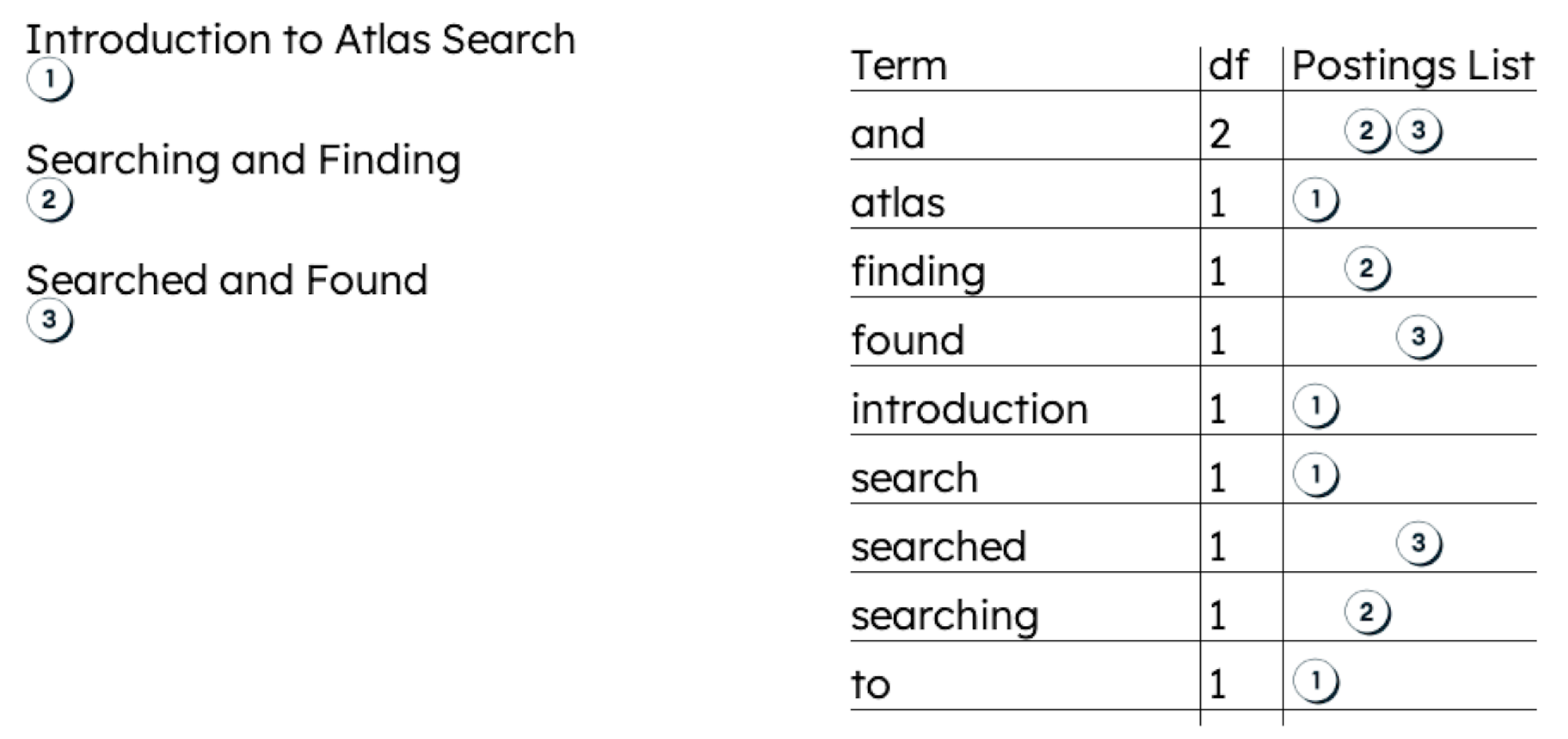📘 Powered by Lucene
Lucene, is a Java library providing powerful indexing and search features, as well as spellchecking, hit highlighting, and advanced analysis/tokenization capabilities. Without a doubt, you've already used Lucene perhaps without even realizing it. It powers the search facilities of countless websites and applications, both public and private.
Anatomy of a Lucene index
A Lucene index encapsulates specialized data structures unique to each type of data indexed.
- Numbers, dates, geo-spatial points: Indexed into a k-d structure
- Vectors: Hierarchical Navigable Small Worlds (HNSW) data structure
- Text: via inverted indexes
What Lucene, and Atlas Search, call an "index" is really a collection of separate individual per-field data structures.
Lucene is designed for both fast searches and speedy indexing. The indexing speed derives from its append-only segmented architecture. When new docuemnts are indexed, they are added to a new segments. When that indexing session is complete, the new segments are opened and blended with all the other active segments. Background processes optimize the index segments by combining them to form larger, and less, segments over time.
A single Lucene index can handle up to 2 billion documents. There is generally a 1-1 correspondence
between documents in your collection to Lucene documents, with the exception of nested documents
mapped as embeddedDocuments (a topic covered later). To differentiate the terminology, Atlas Search
calls the documents in Lucene index "index objects". See
index size and configuration doc
for more details.
Inverted Index
Textual content is the heart and soul of Lucene. string fields are analzyed. The output of the
analysis process is a series of terms. Terms are generally a normalized version of the individual
words of the text. These terms are then organized into an inverted index data structure.
This data structure is lexicographically (or alphabetically) ordered. The following image illustrates
an inverted index built from 3 documents, each with a single string field.

Along with an ordered dictionary of terms, corpus and document-level statistics are also collected into the inverted index structure. These statistics include:
- term frequency (
tf): the number of times a term occurs in the field - document frequency (
df): how many documents contain the term - field length: how many terms are there in each field
Search algorithms
Lucene queries leverage the data structures built at index-time to quickly find, and rank, matching documents. The synergy "index intersection" shines when searching across multiple fields in a single query.
Atlas Search translates its search operators directly to Lucene's Query API.
Resources
- "What is in a Lucene index" - a very educational presentation delivered by Lucene project committer Adrien Grand.
- "Visualizing Lucene's segment merges"
- an illustrative set of animations on the how Lucene keeps itself optimized, balancing both indexing and searching needs.